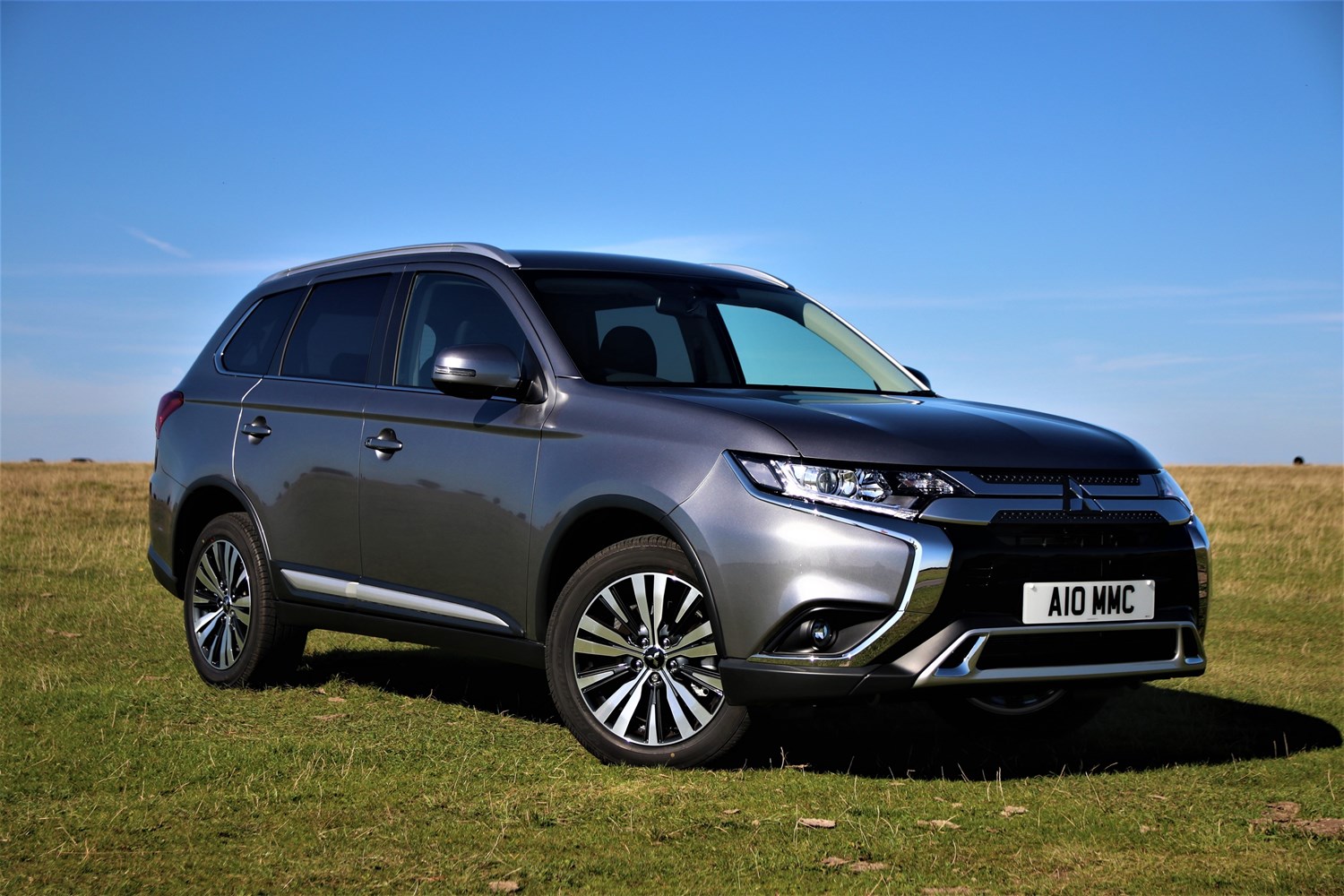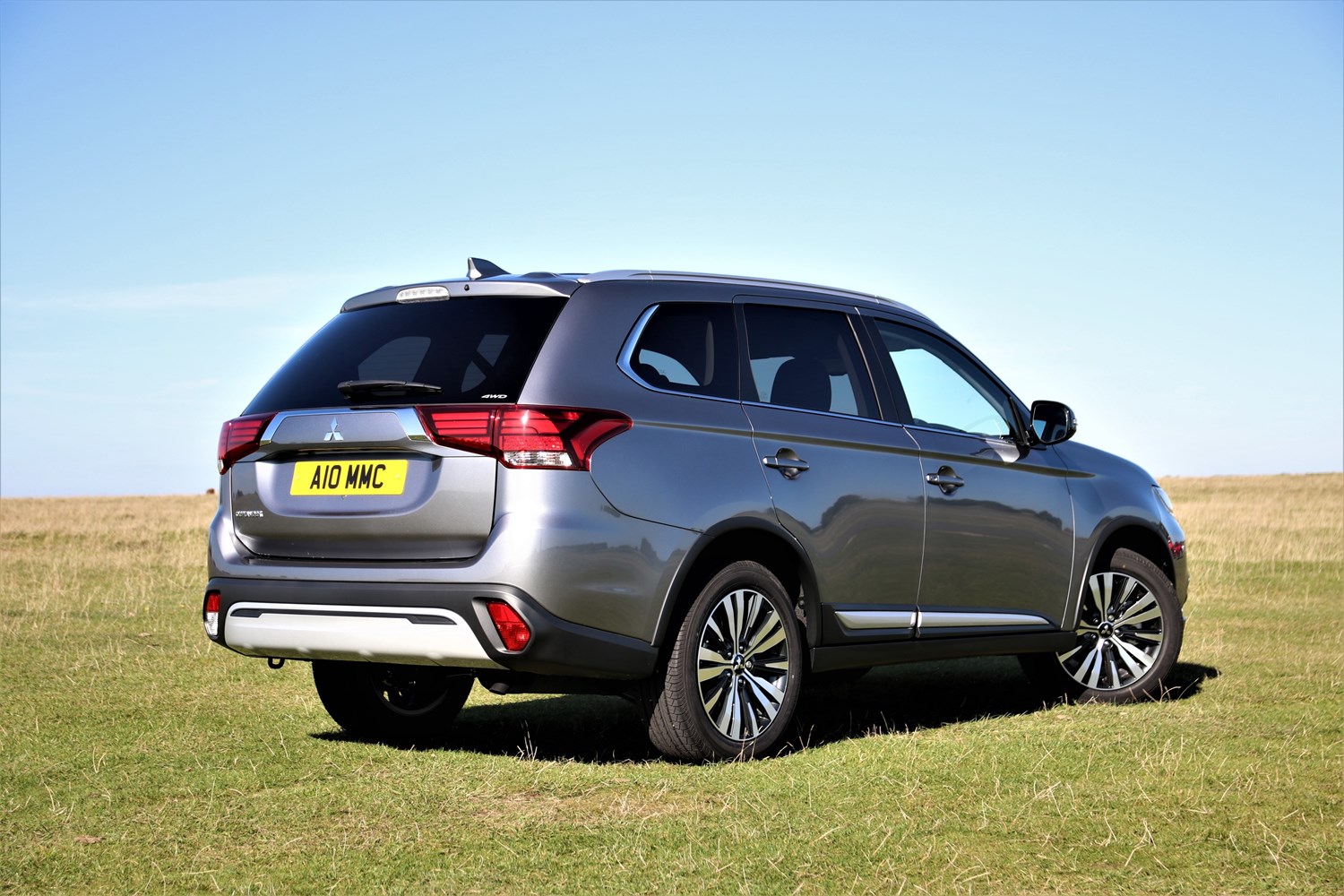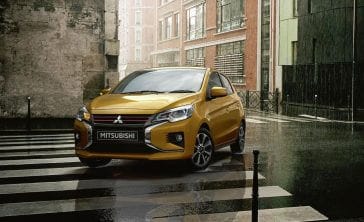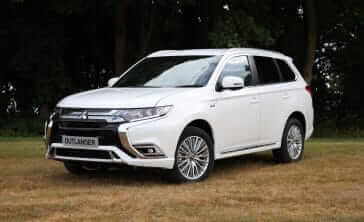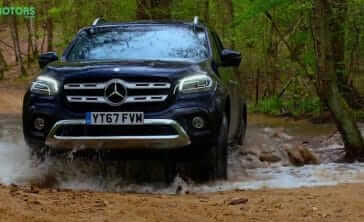Model
Mitsubishi has made a name for itself with its range of SUVs and 4x4s, with models including the ASX, Shogun, Shogun Sport, L200 and last but not least, the Outlander.
This SUV is best known for its PHEV version (reviewed separately here) which was one of the first plug-in hybrids on the market when it arrived in 2012, and for some years it was the best-selling model in its segment.
But the Outlander isn’t just available with electrified variants, but petrol and diesel engines too. It’s now in its third-generation – the most recent iteration arriving in 2013.
Latest model
Despite the Outlander being around for some years, Mitsubishi has continued to adapt and change this SUV throughout its time, with the most recent update arriving in 2019. Here it boasted the model’s new ‘Dynamic Shield’ design – essentially bringing bolder styling to the Outlander.
As part of the update, Mitsubishi introduced a new petrol engine to the range – a 2.0-litre unit mated to a CVT automatic transmission, while changes to the dynamics also improve the way this model rides and drives.
However, in July 2020 Mitsubishi made the shock announcement that it was withdrawing from the UK and rest of Europe – saying it would no longer bring new models to the continent. Essentially the firm is now just selling existing stock of the brand at its dealer network, with a somewhat bleak outlook for all those involved with the brand in the UK.
Value for money
If you’re looking at a new Outlander, prices kick off from £29,410, and for a seven-seat SUV with plenty of standard kit, it represents decent value for money. Granted, it’s not the bargain of the century, but given you get an eight-inch touchscreen, heated front seats and a reversing camera included, you won’t feel short-changed. It’s also competitively priced next to other all-wheel seven-seat SUVs – undercutting the equivalent Honda CR-V and Volkswagen Tiguan Allspace for price. It’s also a good chunk cheaper than the plug-in hybrid version, which is around £7,000 more expensive for a like-for-like model.
It’s a good used buy too, with the current-generation Outlander available from just £7,000, though that will buy an early high-mileage car. For a model with around 80,000 miles on the clock, expect to pay around £9,000.
But the best value can be had for looking at nearly-new models, as you could save as much as £10,000 off the list price by choosing a one-year-old car – a significant saving.
Looks and image
The Outlander won’t be scooping any design awards, but its conservative styling isn’t likely to divide opinion. That said, the 2019 update helped to inject a bit more flair to this Mitsubishi – adopting a bolder front end incorporating a more prominent front grille utilising more chrome than before. Stylish 18-inch alloy wheels are also fitted to all versions of the latest model.
The interior of the Outlander is disappointing, though, lacking the quality you get with rivals. There are plenty of soft-touch plastics around the cabin, but it certainly doesn’t feel as modern or high-quality as many cars in this class, and is starting to look dated. And while it might come with an eight-inch touchscreen as standard, it’s not especially easy to use and doesn’t feel as well-integrated as other systems.
It’s a bit of a disappointing affair behind the wheel as well, with the Outlander being let down by its naturally-aspirated petrol engine – something that feels like a backwards step next to all its rivals’ turbocharged powertrains. It’s certainly no surprise that plenty of buyers flock for the PHEV version instead.
Space and practicality
On the plus side, the Outlander is a largely spacious family SUV. Space in the front two rows is generous, while there are plenty of storage areas dotted throughout to the cabin. Another big plus of choosing the petrol and diesel models over the PHEV is the fact that it comes with seven seats as standard on all versions – the PHEV is limited to a five-seater due to the space taken up by the batteries. While the third row of seats is really limited for children only, they remain useful to have.
In five-seat mode, the Outlander also offers a roomy 591-litre boot, which compares well next to rivals, though, with seven seats in position, there’s only a limited amount of space on offer.
However, the Outlander shows its age by coming with a disappointing lack of driver assistance tech – not even getting autonomous emergency braking or lane keep assist, two features fitted to most current superminis. Top-spec Exceed versions do gain blind-spot warning and rear cross-traffic alert, though.
Engines
If you’re looking to buy a new or nearly-new Outlander today, your only option is a petrol model – the diesel being discontinued at the start of 2019.
The petrol engine is a naturally-aspirated 2.0-litre engine, producing 150bhp and 195Nm of torque – it’s lethargic at best, with 0-60mph taking 13.1 seconds, and capable of 118mph flat out. The CVT automatic gearbox doesn’t help things, either, though it’s worth noting all Outlanders come with four-wheel-drive.
The old diesel therefore still seems like the better option – the Outlander utilising a 2.2-litre unit producing 147bhp and 360Nm of torque – managing 0-60mph in a more pleasant 11.4 seconds. A six-speed manual gearbox was also available on this, alongside the automatic.
Running costs
The key draw to the PHEV model is its impressively low running costs, and that model only makes this petrol Outlander seem even more thirsty. It is especially inefficient – Mitsubishi claiming it’ll return just 32.5mpg, with sky high CO2 emissions of 196g/km. While the diesel still won’t be a bargain to run, its figures are much more agreeable – a fuel economy figure of 48.7mpg, with CO2 emissions of 154g/km.
If you’re looking to keep your running costs down, the PHEV is the best option over a petrol and diesel version, providing you’re able to charge regularly.
Things to look for
Japanese cars are usually known for being fairly reliable and that’s true with the Outlander, with owners having few grumbles about the car in this respect. All newer Outlanders will also be covered by a five-year warranty from Mitsubishi, though the mileage cap on it is quite low at 62,500 miles.
Rivals
There is certainly no shortage of seven-seat SUVs on the market to rival the Outlander, with three of our favourite models being the Honda CR-V, Skoda Kodiaq and Peugeot 5008.
If you fancy something a bit more upmarket, a Volkswagen Tiguan Allspace, Mercedes GLB and Land Rover Discovery Sport could all be worth considering, though will set you back more money.
Depreciation
When people think of the Outlander, it’s the PHEV model that comes to mind, and it’s these models that hold their value best with buyers – driven by plenty of demand for both new and used models.
But the limited appeal of the standard petrol and diesel models means these Outlanders depreciate quite heavily, especially the newer they are.
